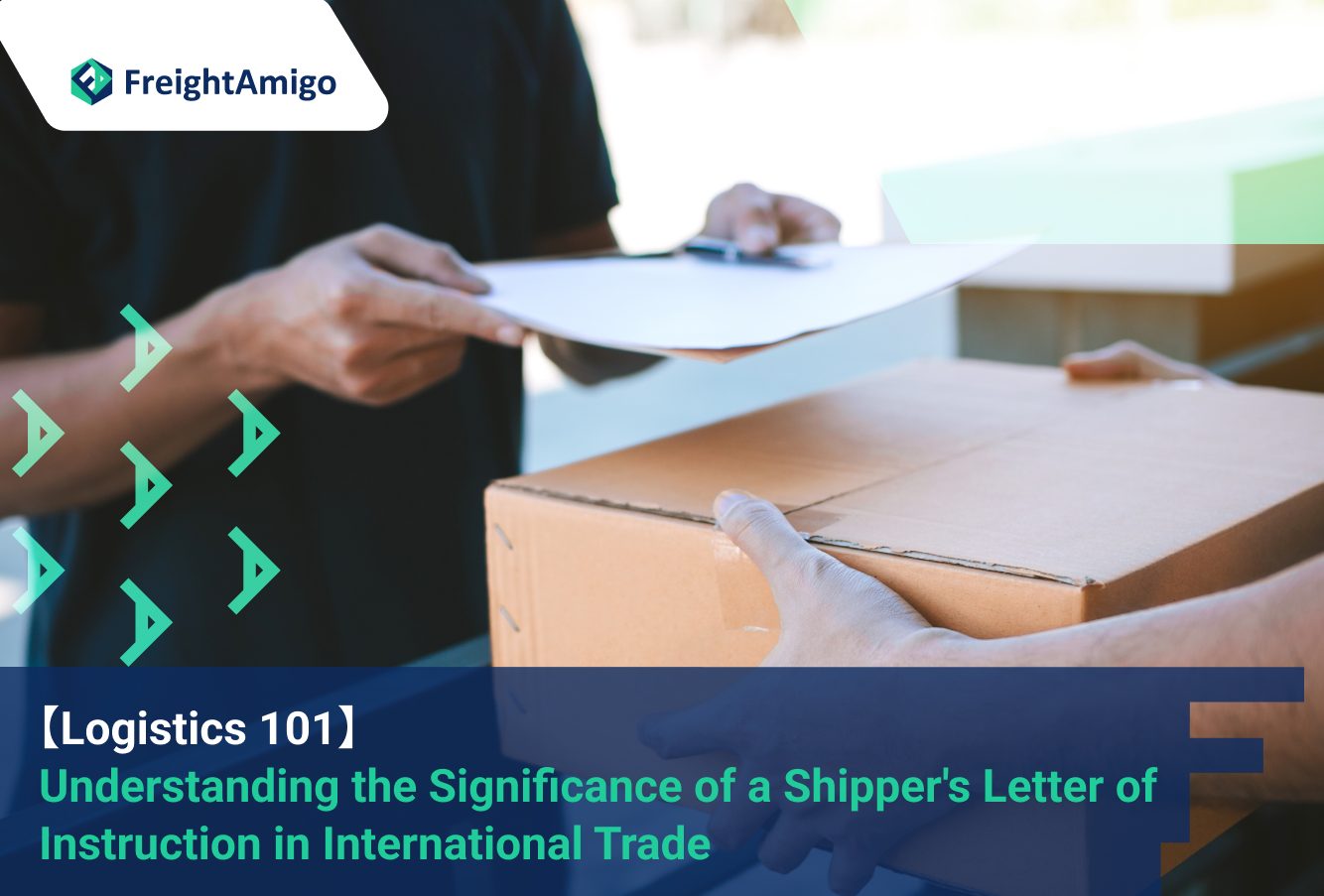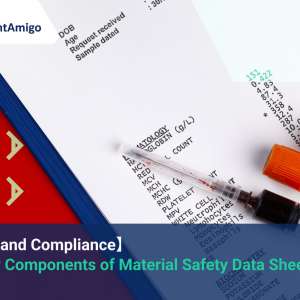In the fast-paced world of international trade, efficient communication and precise instructions are crucial for successful shipping operations. One document that plays a vital role in streamlining the export process is the Shipper’s Letter of Instruction (SLI). This article will delve into the importance of the SLI, its key components, and how it facilitates seamless coordination between exporters and freight forwarders.
Latest update on 29 January, 2024 by Aurora Park– Marketing Analyst at FreightAmigo
Want To Compare The Best Express, Air Freight, Sea Freight, Rail Freight & Trucking Rates So As To Have Better Control On Cost?
What is a Shipper’s Letter of Instruction?
A Shipper’s Letter of Instruction (SLI) is a comprehensive document that outlines specific instructions from exporters to their agents, typically freight forwarders, regarding the transportation of goods via air or ocean shipments. Think of it as a letter that provides your agent/forwarder with essential details on how and where to send your products.
The Three-fold Purpose of an SLI
The primary purpose of an SLI can be categorized into three key aspects:
- Transportation and Documentation Instructions: The SLI serves as a medium to provide detailed transportation and documentation instructions to your freight forwarder. It ensures that your agent has all the necessary information to handle and manage your shipment efficiently.
- Export Control and Reporting Information: By including export control and reporting information, the SLI enables exporters to comply with regulatory requirements. It ensures that all necessary export control documents are provided and transmitted accurately.
- Authorization for Electronic Export Information (EEI) Transmission: The SLI conveys authorization to your agent to transmit Electronic Export Information (EEI) to the Automated Export System (AES) on your behalf. This step is crucial for complying with federal regulatory standards, especially for exports from the United States.
Who Uses the Shipper’s Letter of Instruction?
The Shipper’s Letter of Instruction is completed by the exporter and is sent to the freight forwarder alongside other export paperwork. It serves as a cover memo for the rest of the documentation and acts as a summary of the essential information your forwarders need to know.
The Benefits of Using an SLI
While using an SLI is not mandatory, providing thorough instructions to your freight forwarders can significantly impact the success of your shipment. Here are some key benefits of using an SLI:
- Clear Communication: By providing detailed instructions, you ensure that your forwarders understand your requirements and expectations. This helps avoid misunderstandings and minimizes the risk of errors or delays in the shipping process.
- Efficient Operations: With a well-prepared SLI, your freight forwarders have all the necessary information at their fingertips, allowing them to handle your shipment more efficiently. This can lead to faster processing times, smoother logistics, and overall cost savings.
- Regulatory Compliance: The SLI includes essential export control and reporting information, ensuring that your shipment complies with the necessary regulations. This compliance is crucial for avoiding penalties and facilitating smooth customs clearance.
- Streamlined Documentation: By providing all the required information in one document, the SLI simplifies the documentation process. This saves time and effort for both exporters and freight forwarders, reducing the chances of missing or incomplete paperwork.
- Improved Customer Experience: By providing comprehensive instructions, you enable your freight forwarders to handle your shipment with precision, ensuring that your products reach their destination in optimal condition and on time. This, in turn, enhances the overall customer experience and strengthens your business relationships.
Essential Components of an SLI
To ensure clarity and consistency in the information provided by exporters, the National Customs Brokers and Forwarders Association of America (NCBFAA) introduced a model SLI format in 2014. While this format is not mandatory, it offers a standardized approach that exporters can follow. Here are some key components that should be included in an SLI:
- Exporter Information: Clearly state the name and contact details of the exporter, along with any relevant identification numbers (e.g., Exporter Identification Number).
- Transportation Details: Specify the mode of transportation (e.g., air, ocean) and provide accurate information about the port or airport of departure and destination.
- Description of Goods: Include a detailed description of the goods being shipped, such as the quantity, weight, dimensions, and packaging. This information helps ensure proper handling and storage of the products.
- Consignee Details: Provide the name and contact information of the ultimate consignee, who will receive the goods at the destination. Additionally, include information about any intermediate consignees involved in the shipment process.
- Special Handling Instructions: If there are any specific handling requirements for your goods, such as non-stackable items or specific orientation during transportation, clearly communicate these instructions.
- Export Control Information: Include any necessary export control information, such as export licenses or restrictions, to ensure compliance with relevant regulations.
- Insurance and Charges: Indicate whether you require insurance coverage for your shipment and specify who will be responsible for the associated charges. This section helps clarify the financial aspects of the shipping process.
- Power of Attorney: If you authorize your freight forwarder to act on your behalf for customs and export control purposes, include a power of attorney provision.
- Special Instructions: Provide any additional instructions or requirements that are specific to your shipment, ensuring that your freight forwarder is aware of any unique circumstances or needs.
Once the SLI is completed, it should be signed and dated by the exporter, confirming their agreement with the provided instructions.
Completing the SLI: A Step-by-Step Guide
Completing an SLI can be a straightforward process if you follow a systematic approach. Here is a step-by-step guide to help you fill out the SLI accurately:
- Gather Information: Collect all the necessary details about your shipment, including transportation information, product descriptions, consignee information, and any special instructions.
- Select the SLI Format: Choose the SLI format that aligns with your requirements. The NCBFAA model SLI format is widely used and provides a comprehensive template to guide exporters.
- Fill Out the Exporter Details: Enter your company’s name, address, and contact information in the designated section of the SLI.
- Provide Transportation Details: Specify the mode of transportation (air or ocean) and accurately state the ports or airports of departure and destination.
- Describe the Goods: Thoroughly describe the goods being shipped, including quantity, weight, dimensions, and packaging details. This information helps ensure proper handling and storage throughout the shipping process.
- Include Consignee Information: Provide the name, contact details, and any relevant identification numbers of the ultimate consignee. If there are intermediate consignees involved, include their information as well.
- Specify Special Handling Instructions: If your goods require any special handling, such as fragile items or temperature-sensitive products, clearly communicate these instructions in the SLI.
- Address Export Control Requirements: If your shipment involves any export control regulations, such as the need for export licenses or compliance with specific restrictions, include this information in the SLI.
- Determine Insurance and Charges: Indicate whether you require insurance coverage for your shipment and specify who will be responsible for the associated charges. This ensures transparency and avoids any confusion regarding financial responsibilities.
- Authorize Power of Attorney (if applicable): If you want to grant your freight forwarder the authority to act on your behalf for customs and export control purposes, include a power of attorney provision in the SLI.
- Add Special Instructions, if any: Include any additional instructions or requirements that are unique to your shipment. These could be specific delivery instructions or any other relevant details that would assist your freight forwarder in handling your goods correctly.
- Sign and Date the SLI: Once you have completed all the necessary sections of the SLI, sign and date the document to confirm your agreement with the provided instructions.
By following these steps, you can ensure that your SLI is accurate and comprehensive, providing your freight forwarder with all the necessary information to handle your shipment effectively.
Leveraging Technology for Streamlined SLI Completion
Completing an SLI manually can be time-consuming, especially if you have multiple shipments to handle. Fortunately, there are software solutions available that simplify and streamline the SLI completion process.
By using export documentation software, such as Shipping Solutions, you can expedite the SLI completion process and eliminate the need for redundant data entry. These software solutions guide you through the SLI completion process, ensuring that all the required information is captured accurately and efficiently. This saves you time and minimizes the chances of errors or omissions in your SLI.
Conclusion
In the complex world of international trade, effective communication and precise instructions are essential for successful shipping operations. The Shipper’s Letter of Instruction (SLI) serves as a vital document that enables exporters to provide specific instructions to their freight forwarders. By including transportation details, export control information, and authorization provisions, the SLI ensures smooth coordination between exporters and their logistic partners.
Using an SLI offers several benefits, including clear communication, efficient operations, regulatory compliance, streamlined documentation, and an enhanced customer experience. By completing an SLI accurately and thoroughly, exporters can facilitate the smooth movement of their goods and maintain compliance with relevant regulations.
With the availability of software solutions, such as export documentation software, completing an SLI has become more convenient and efficient. Leveraging technology can significantly simplify the SLI completion process, saving time and reducing the chances of errors.
In conclusion, understanding the significance of a Shipper’s Letter of Instruction and effectively utilizing it in your shipping operations can lead to smoother logistics, improved compliance, and enhanced customer satisfaction. By providing clear instructions to your freight forwarders, you can ensure that your products reach their destination safely and efficiently, contributing to the growth and success of your international trade endeavors.
There Are Different Options For Cargo Transportation. If You Want To Choose The Most Convenient And Suitable Solution, It Is Best To Have The Full Support Of Logistics Experts! If You Are Planning To Ship Goods Overseas, Please Go To The FreightAmigo Page For Inquiries.
If you have any inquiries on logistics/supply chain, feel free to contact FreightAmigo now:
Chat with us online | Hotline: +852 28121686 | WhatsApp: +852 27467829









































